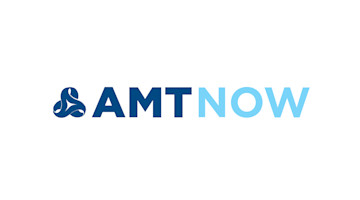Even in times of deteriorating economic conditions, there is still demand for manufacturing technology. In the midst of the recession caused by the 2008 financial crisis, orders for metalworking machinery, measured by the U.S. Manufacturing Technology Orders Report published by AMT – The Association For Manufacturing Technology, totaled around $95 million in January 2009, the lowest level recorded. Although orders grew scarcer, businesses continued to invest in manufacturing technology.
Recently, the U.S. Bureau of Economic Analysis released its first estimate of GDP for the first quarter of 2025, which showed that the economy contracted by 0.3% on an annualized basis. The underlying components that went into the estimate showed mixed messages for the manufacturing technology market, as consumer spending remained strong, but a massive increase in imports flipped the headline negative. While the decline is manageable and looks more like the beginning of 2022 than the beginning of 2008, reexamining the factors currently driving the manufacturing technology market and the opportunities still available is important, especially if the economy continues to trend toward the downside.
The Drivers of Customer Industry Orders
Every downturn is different, so the experience of one doesn’t exactly offer GPS guidance through the next. The best way to navigate is by looking at buying trends going into the downturn and determining what drove those machinery orders and how those drivers are affected by the circumstances causing the downturn. This article will look at some of the drivers of orders from various customer industries and attempt to gauge their resilience to economic headwinds.
Contract Machine Shops
As AMT regularly cites in USMTO data releases, contract machine shops are the largest consumers of manufacturing technology in a given month. While they did not purchase machinery with the same intensity as the overall market for much of 2024, they began to invest in the last quarter of the year and into the beginning of 2025. During economic downturns, orders from contract machine shops fall like the rest of the market but have a higher floor and tend to recover quicker than orders from OEMs. As the economy emerges from downturns and capacity utilization quickly increases, the parts needed to meet growing demand for final goods tend to go to job shops for production, as OEMs weigh how to handle changing demand over longer time horizons.
Aerospace
Aircraft deliveries fell short of expectations in 2024. However, Boeing’s massive backlog would take nearly 20 years to fill at its 2024 pace of deliveries. In 2025, Boeing is already requesting that the FAA increase their limit of 737 MAX deliveries. While commercial air travel is one of the most discretionary consumer expenses, the sheer size of the backlog means airlines will continue to take deliveries of new planes.
Electrical Equipment Manufacturers
During an economic downturn, energy use of all forms tends to decline, meaning extraction, refining, and generation activities also decline. One area that may slow but prove resilient is electrical equipment manufacturing. Amid efforts to retrofit many power generation and distribution networks and expand capacity to accommodate demand from the growing number of data centers, there is a shortage of electrical equipment, including transformers. The necessity of grid modernization efforts, including some government funding, could make this industry resilient to declining economic trends.
Mapping Tomorrow’s Opportunities
Taking what is available and transforming it into something greater than the sum of its parts is the central purpose of manufacturing. In the same spirit, finding growth opportunities in an uncertain economic environment is achievable if you know what trends to follow. To better understand the economic forces shaping the landscape and individual industry patterns that may buck a downward trend, attend AMT’s MTForecast conference on Oct. 15-17 in Schaumburg, Illinois. In the meantime, AMT’s research team is always available to highlight different industry trends and help make sense of the data.
If you have any questions about this information, please contact Chris at cchidzik@AMTonline.org.
To read the rest of the Emerging Markets Issue of MT Magazine, click here.






